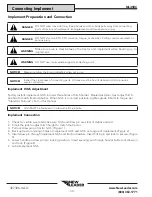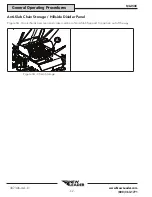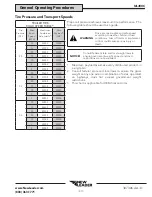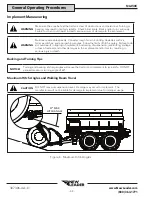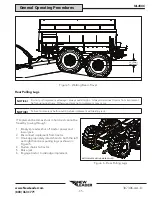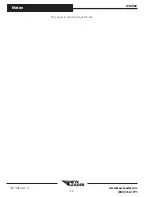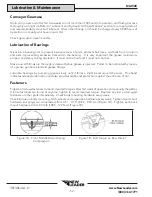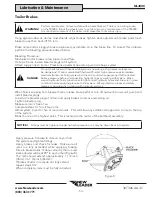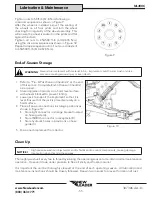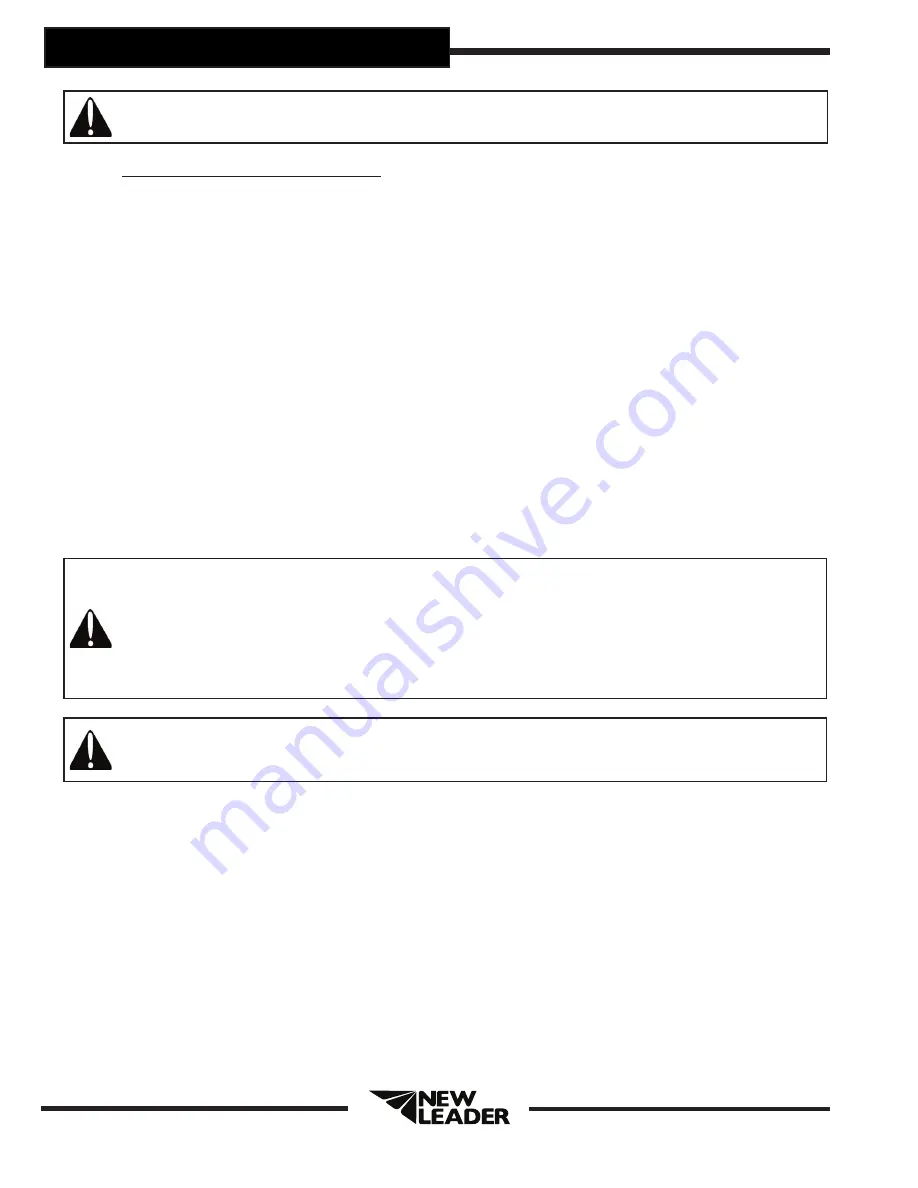
- 40 -
www.NewLeader.com
(800) 363-1771
307306-AA-D
NL450C
Header
Initial Startup
Unit is now ready for
fi
eld testing.
WARNING
Stand clear of moving machinery.
NOTE: Do not load spreader with material.
1. Check entire unit to make sure all fasteners are in place and properly tightened per “Standard
Torques” section in this manual.
2. Make sure no other persons are in vicinity of spreader.
3. Make sure no loose parts are in unit or on conveyor or spinner.
4. Check oil level in hydraulic reservoir;
fi
ll as necessary. Refer to “Lubricant & Hydraulic Oil
Speci
fi
cations” in Lubrication & Maintenance section of this manual for proper oil. Completely open
reservoir valves.
5. Start engine and turn on hydraulics. Allow hydraulics to circulate until oil is warm.
6. Perform hydraulic bleed procedure via the display. Refer to “Hydraulic Bleeding” in Controller
Operations section of this manual.
7. Perform all calibration procedures for spinners and all installed bins. Refer to “Component
Calibration” in Controller Operations section.
8. Run spinner at 300 RPM. Allow to run until spinner is operating smoothly.
9. Run conveyor at 20 RPM and spinner at 300 RPM. Run until conveyor is operating smoothly.
10. Run conveyor at 20 RPM and spinner at 700 RPM. Allow both conveyor and spinner to run until
operating smoothly.
11. Enable boundary left and right and verify that RPM adjust accordingly.
12. Run conveyor at 0 RPM and spinner at 0 RPM. Make sure both conveyor and spinner do not move.
13. Shut system down.
WARNING
DO NOT check leaks with hands while system is operating as high pressure oil leaks can be
dangerous! If skin is pierced with hydraulic
fl
uid at high pressure seek immediate medical
attention as
fl
uid injected into the skin could cause gangrene if left untreated. Relieve
pressure before disconnecting hydraulic lines or working system. Make sure all hydraulic
fl
uid connections are tight and all hydraulic hoses and lines are in good condition before
applying pressure to the system. Wear protective gloves and safety glasses or goggles
when working with hydraulic systems.
WARNING
DO NOT check for leaks adjacent to moving parts while system is operating as there may
be danger of entanglement!
14. Check all connections in hydraulic system to make sure there are no leaks.
15. Check hydraulic oil reservoir and re
fi
ll to maintain level at mid-point of gauge.





